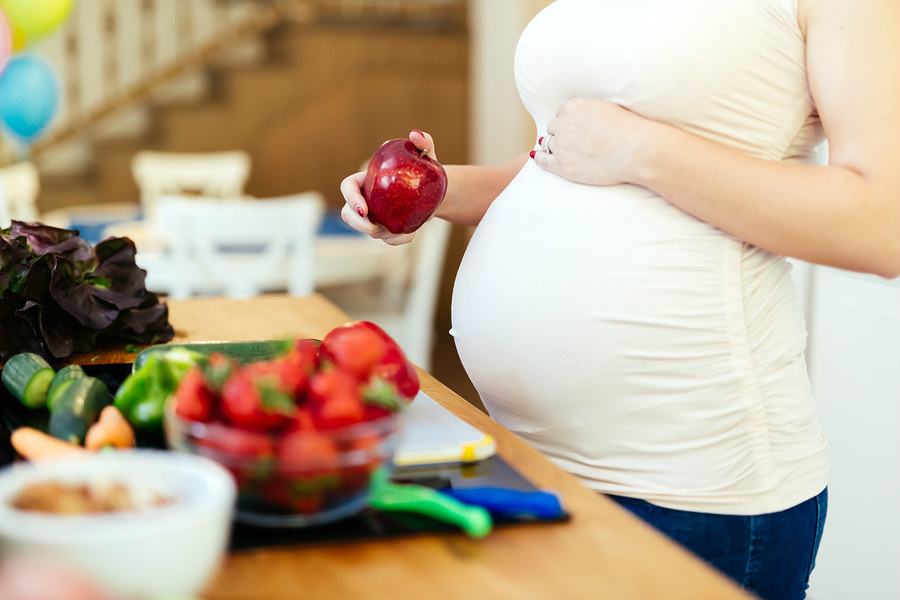Pregnancy is a remarkable journey, characterized by numerous physiological changes to support the development of the fetus. Among the many nutrients critical to this process, iron stands out for its essential role in both maternal and fetal health.
A recent research published in The American Journal of Clinical Nutrition has highlighted the importance of monitoring iron status in pregnant women, particularly focusing on primiparous (first-time) mothers in high-resource settings. The study proposes an early pregnancy ferritin threshold that could predict iron deficiency in the final trimester, underscoring the need for proactive measures to ensure adequate iron levels throughout pregnancy.
Understanding Iron Deficiency in Pregnancy
Iron deficiency is alarmingly common among pregnant women, primarily due to the increased iron requirements necessary to support fetal development and maintain maternal wellness. As the fetus grows, it relies on maternal iron stores to facilitate its own growth and development, particularly during the third trimester when rapid brain and organ development occurs. The additional iron needs can often surpass what is available through diet alone, putting many women at risk of deficiency.
Maternal iron deficiency can lead to a host of adverse pregnancy outcomes. Research has linked inadequate iron levels to postpartum depression, preterm birth, low birth weight, and small-for-gestational-age births. Moreover, a deficiency can hinder fetal iron accumulation, which can have long-lasting neurodevelopmental effects and increase the likelihood of early-onset iron deficiency after birth. Consequently, ensuring adequate iron levels throughout pregnancy is vital for both maternal and child health.
The Ferritin Threshold: A Predictive Tool
The recent study in The American Journal of Clinical Nutrition emphasizes the significance of monitoring ferritin levels in early pregnancy. Ferritin is a protein that stores iron in the body and serves as a crucial indicator of iron status. The researchers propose that a specific ferritin threshold in early pregnancy can serve as a predictor for iron deficiency in the final trimester. This proactive approach can help healthcare providers identify at-risk individuals early, allowing for timely interventions such as dietary adjustments or supplementation.
The proposed threshold enables clinicians to implement strategies to enhance iron intake, thereby reducing the risk of deficiency as pregnancy progresses. Early identification of low iron status can also empower women to make informed dietary choices that can positively influence their iron levels.
Dietary Recommendations for Iron Intake in the Third Trimester
As pregnancy progresses, particularly into the third trimester, it becomes increasingly important for women to consume iron-rich foods to support both their health and that of their developing fetus. Here are some dietary recommendations for ensuring adequate iron intake:
1. Lean Red Meat: Beef and lamb are among the best sources of heme iron, which is more readily absorbed by the body compared to non-heme iron found in plant sources. Incorporating lean cuts of red meat into meals a few times a week can significantly boost iron levels.
2. Poultry and Fish: Chicken, turkey, and certain types of fish (like tuna and salmon) are also excellent sources of heme iron. These can be included in various dishes, such as salads, soups, or stir-fries.
3. Legumes: Beans, lentils, and chickpeas are rich in non-heme iron and are especially important for vegetarians or those looking to reduce meat consumption. They can be added to salads, stews, and casseroles.
4. Dark Leafy Greens: Spinach, kale, and Swiss chard provide non-heme iron along with a variety of other nutrients. These greens can be consumed in salads, smoothies, or as cooked side dishes.
5. Nuts and Seeds: Pumpkin seeds, sesame seeds, and almonds are not only healthy snacks but also good sources of non-heme iron. They can be sprinkled on salads, incorporated into trail mixes, or used in baking.
6. Fortified Foods: Many cereals and grains are fortified with iron, making them an excellent option for boosting intake. Opt for whole-grain cereals and breads that list iron as a nutrient.
7. Dried Fruits: Apricots, raisins, and prunes are tasty snacks that also provide a source of non-heme iron. They can be enjoyed alone or added to salads and oatmeal.
8. Vitamin C-Rich Foods: To enhance the absorption of non-heme iron, it is beneficial to consume vitamin C-rich foods alongside iron sources. Citrus fruits, strawberries, bell peppers, and tomatoes can be great additions to meals featuring iron-rich foods.
Strategies for Optimizing Iron Absorption
While consuming iron-rich foods is essential, it’s equally important to consider how to optimize the absorption of iron. Here are some strategies:
1. Avoid Certain Inhibitors: Certain substances can inhibit iron absorption. For instance, tannins in tea and coffee, calcium in dairy products, and phytates found in some whole grains can interfere with iron absorption. It’s advisable to consume these at different times than iron-rich meals.
2. Cook with Cast Iron: Cooking in cast iron pots and pans can increase the iron content of food, particularly acidic foods like tomato sauce.
3. Meal Pairing: Pairing iron-rich foods with vitamin C-rich foods can significantly enhance iron absorption. For example, adding citrus juice to a spinach salad or enjoying a glass of orange juice with iron-fortified cereal can be beneficial.
Importance of Consuming Iron During Pregnancy
Iron plays a critical role during pregnancy, impacting not only the health of the mother but also the development and well-being of the fetus. The findings emphasize the importance of early monitoring of ferritin levels to predict potential iron deficiency later in pregnancy. By prioritizing iron-rich foods and employing strategies to enhance iron absorption, pregnant women can take proactive steps to safeguard their health and that of their baby. Regular consultations with healthcare providers can further ensure that any potential deficiencies are addressed promptly, setting the stage for a healthier pregnancy and beyond.





